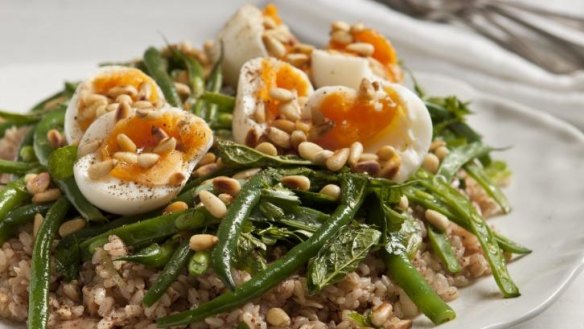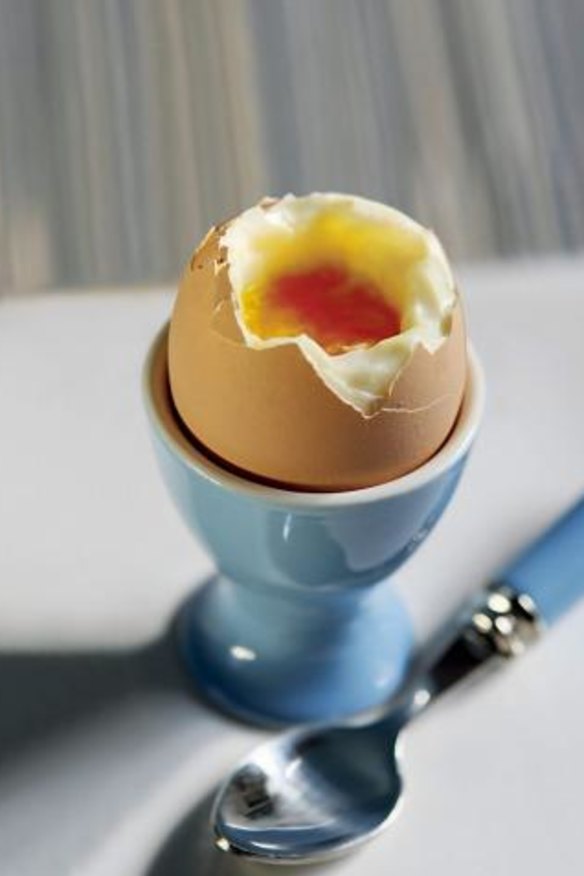How to peel the perfect hard-boiled egg

How do I peel the perfect hard-boiled egg? W. Fleming
As soon as the weather warms this perennial question returns in a flurry. Recently, on BBC Radio 4, Jay Rayner spent a good deal of time discussing this with four experts. Each presented a different method. One said the eggs must be at least a week old – not a problem if you're buying from an Australian supermarket. Another said that if the water was slightly acidulated or slightly alkaline then shells would come off more easily. A scientist said that it is simply a matter of getting between the membrane on the shell and the solid white, which one does by finding the air pocket under the shell, generally but not always under the wide end of the egg. One then peels from here. A fourth expert maintained that plunging cooked eggs into cold water ensured that shell could be peeled away without damaging the egg. A survey of listeners found this to be the most reliable method.
Someone told me that fish and chips is a Belgian dish, not English. J Clausen

After Jean-Claude Van Damme and EU agricultural directives, the dish of mussels and fried potatoes is probably Belgium's most internationally recognisable icon. The Belgians were frying potatoes, sometimes in the shape of fish, during the winters of the mid to late 18th century. (There are accounts of French frying potatoes around the Pont Neuf in Paris but these are most likely to be escalloped potato discs, dipped in batter and deep fried, similar to our potato scallops, also known as potato cakes if you live in the south.) It is thought the practice was adopted in England from Belgian traders. Jews were battering and frying fish long before the modern British chippy and they are thought to have taken the practice to England from Eastern Europe. Dickens mentions a fish frying house in Oliver Twist in the late 1830s. Fish and chips came together around about this time with the frying done in lard or dripping, particularly in the Midlands, where it was a popular street food for mill workers. What really kicked off the rise of the popularity of the dish was the technology that enabled cottonseed to be turned from waste into oil in the late 1850s. This was used in fuelling light in lamps until the rise of kerosene. Cheap cottonseed was then directed to the food market, giving an affordable alternative to lard or dripping to fry in. Food chemists discovered how to hydrogenate cottonseed oil, making it an easy to transport solid, and even more attractive to the fish and chip fryers. The first recorded fish and chip shop opened in London in 1860, and the oldest store still in existence is near Leeds. It is called The Oldest Fish and Chip Shop In The World, having sold its first portion in 1865. The United Kingdom has 1200 McDonald's outlets but more than 10,000 fish and chip stores.
A recipe for a slow-cooked meat dish tells me to brown the meat. Doesn't browning meat seal in the juices? Wouldn't sealing in the juices stop it from softening? I. Harley
No, contrary to popular belief, browning meat does not seal in the juices. When you heat meat the muscles constrict and force moisture out of the cut muscle fibres. If you wanted to seal in the juices you'd encase your steak in epoxy resin. What browning does is add colour and flavour to the final dish. Browning is also known as the Maillard reaction, in which sugars and proteins create new flavour compounds when heated. It's the heat and time that softens the muscle fibres and causes the collagen in skin and connective tissue to form into lip-smacking sticky gelatin.
Send your vexing culinary conundrums to brainfood@richardcornish.com.au or tweet to @Foodcornish
Appears in these collections
The best recipes from Australia's leading chefs straight to your inbox.
Sign up